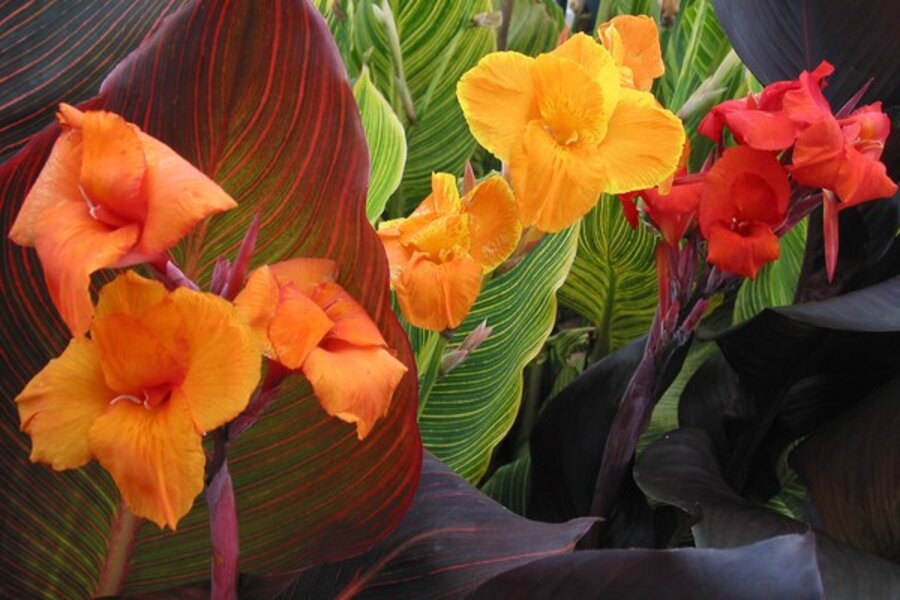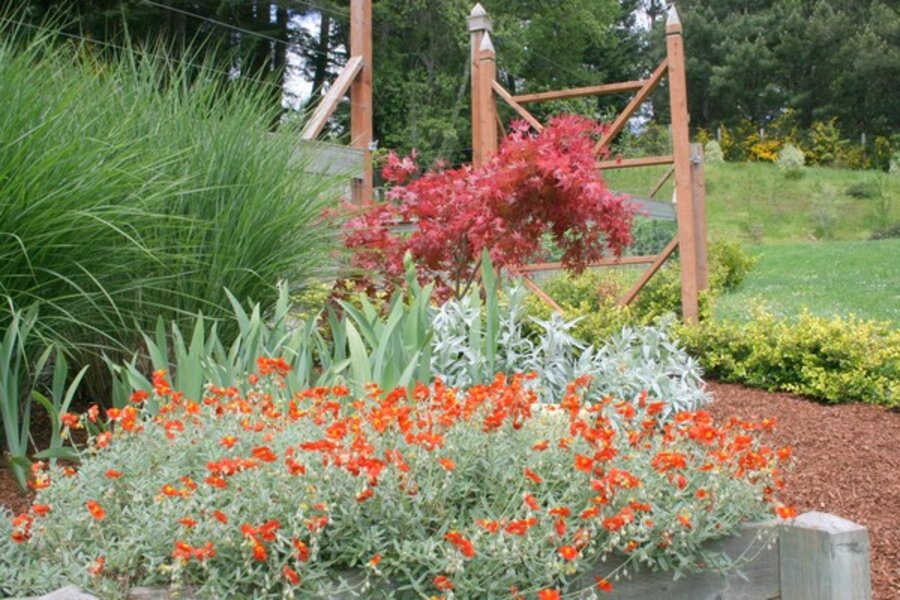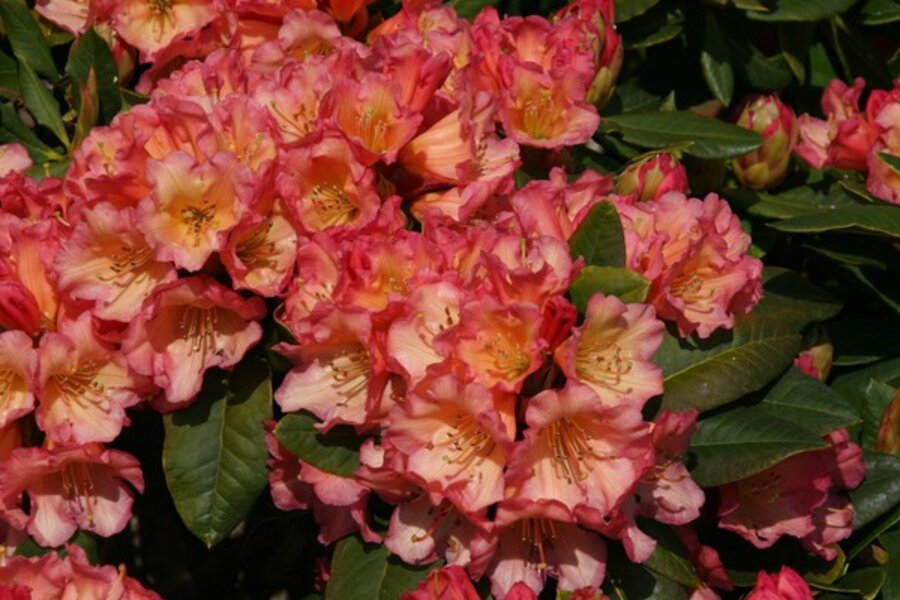Oranges and ambers brighten the garden
Loading...
By the end of winter, subtle tones and pastel colors just aren't doing it for me. After looking at a gray sky for months on end, I'm ready for some bold shots of color! And nothing fills the bill like orange.
While orange may seem hard to design with in a classy way, in fact it lends itself to a number of creative combinations:
Orange and lime green pair beautifully, because each brings out the yellow in the other. Purple also makes an unexpectedly fun combination with orange in the garden. Rich red-purple blooms look pleasingly exotic with more vivid shades of orange, while bluish purple harmonizes best with oranges that veer more toward yellow or pink shades.
Here are five of my favorite orange flowers to experiment with:
- The Third Harmonic Peruvian lily (Alstroemeria 'The Third Harmonic') is an easy grower in USDA Zones 7 to 10, reaching four feet tall and wide. It does best with at least six hours of sunshine per day, and, if given minimal garden care, it responds with lush foliage and cheerful blooms in spring and fall. If you'd like to delight friends, plant The Third Harmonic Peruvian lily with the airy purple tall verbena (Verbena bonariensis) for a long-lasting cut flower bouquet.
- Tropicanna canna lily (Canna 'Phasion') creates a fast-growing clump of vividly striped foliage to about four feet tall, then sends up bright! orange! flowers! in midsummer that soar to six feet tall. It's hardy in Zones 7 to 11, and is tough enough in my Zone 9 climate that I even plant them in commercial landscapes. If you live in a colder zone, however, don't despair; Tropicannas grow beautifully in containers, or can be dug and brought inside at the end of each growing season. [Tropicanna is featured in the first photo above.]
- Amber Flower Carpet rose (Rosa x 'Flower Carpet Amber') is a stunning new addition to the sturdy Flower Carpet line of groundcover roses. I've been growing other colors for years, and they've proven strong enough to take windy seacoast conditions, abuse in commercial landscapes, and neglectful watering from busy homeowners, so long as they're given good sunshine and planted in a landscape without deer. They reach three to four feet tall and wide and grow easily in Zones 6 to 11, but can also grow well in Zones 4 to 5 if given winter protection. I love them with the gray-toned foliage and light purple flower color of lavender or catmint. [To see a photo of this rose, click on the arrow at the right base of the first photo above.]
- Henfield Brilliant sun rose (Helianthemum 'Henfield Brilliant') is a superstar in drought-tolerant gardens. The deep-orange flowers and gray foliage look great with the rich purple blooms and grayish green leaves of Mexican bush sage (Salvia leucantha) . They bloom off and on throughout the summer (mostly on), and form a thick mat of weed-suppressing foliage that stays low and covers the ground. Sun roses are hardy to Zone 4, and are even deer-resistant. They need full sun and good drainage to do their best. [See the third photo above; Henfield Brilliant sun rose is the plant in the foreground.]
- Honey Butter rhododendron (Rhododendron 'Honey Butter') is a dwarf rhodie with brilliant yellow-pink-orange blooms. Many orange- and apricot-colored rhododendrons have lackluster foliage, but the compact form and medium green leaves of 'Honey Butter' show up well in the foreground of other shrubs. Purply blue rhododendrons such as 'Crater Lake' or 'Blaney's Blue' make ideal planting companions. [Honey Butter is pictured in the fourth photo above.]
To receive Monitor recipes weekly sign-up here!
-----
Genevieve Schmidt is a landscape designer and garden writer in the redwoods of Northern California. She shares her professional tips for gardening in the Pacific Northwest at North Coast Gardening and on Twitter.








